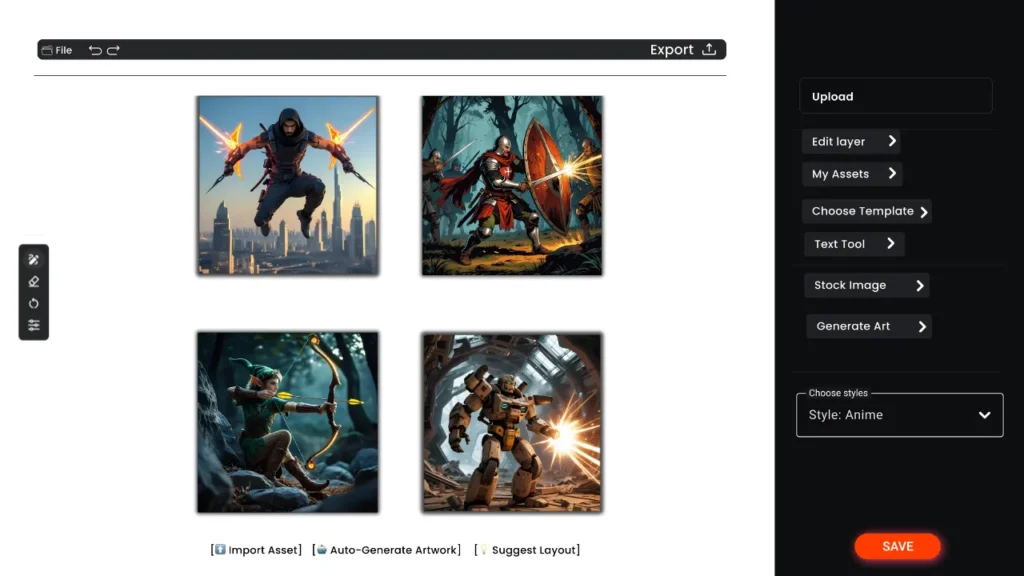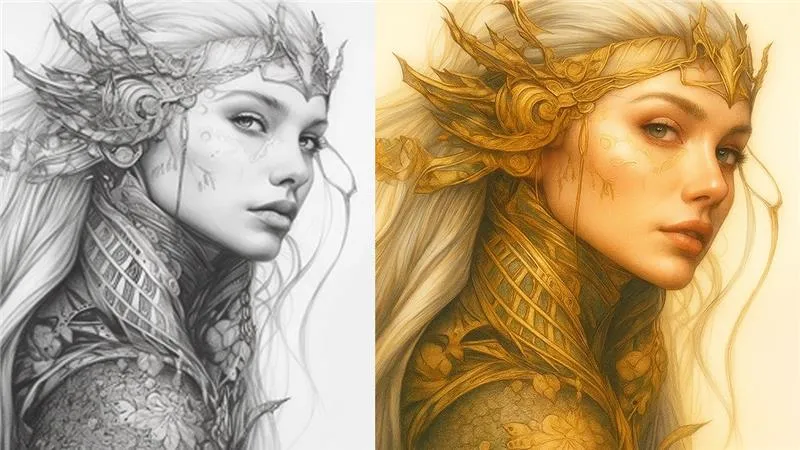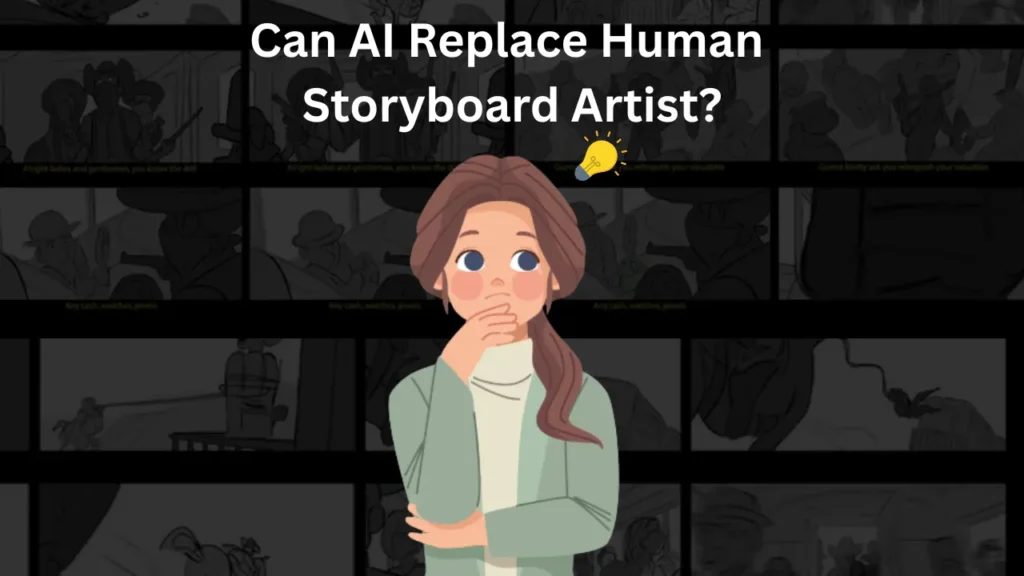How AI is Revolutionizing Storyboarding in the Creative Industry in 2025

AI is reshaping the creative industry by streamlining the way storyboards are developed. What once took hours of manual sketching can now be completed in minutes using intelligent automation. This blog explores how AI enhances visualization, auto-generates scenes from scripts, and enables real-time changes—reducing production time while boosting creativity.
From filmmakers and advertisers to animators, professionals are embracing tools like the digital AI storyboard creator to bring their ideas to life faster and with greater precision. Discover how this technology is changing the future of storytelling, increasing workflow efficiency, and opening new creative possibilities for teams of all sizes in today’s competitive content landscape.
The Future of Storyboarding: AI-Powered Tools for Visual Storytellers
We all know that visual storytelling is transforming industries across film, advertising, gaming, and animation. At the heart of this transformation are AI-powered storyboarding tools that help creators visualize scenes faster and with more precision.
This blog explores how these advanced technologies assist with script breakdowns, shot framing, and sequence planning in just a few clicks. With access to intelligent features like auto-layouts, character placement, and even storyboard template suggestions, creatives no longer need to start from scratch.
Learn how AI-generated storyboarding tools are making it easier than ever to turn concepts into polished visuals, saving time while enhancing creativity. Whether you’re a solo creator or part of a production team, the future of storyboarding is smarter, faster, and more collaborative.
AI Storyboarding Tools: What Creators Need to Know in 2025
AI storyboarding tools are transforming how creatives approach the pre-production phase. These tools use artificial intelligence to convert scripts into visual sequences, offering instant scene suggestions, auto-generated frames, and even voice-to-frame conversions. In 2025, these features are not just experimental—they’re essential for creators working under tight deadlines.
Whether you’re an filmmaker, animator, or game developer, AI tools significantly reduce manual effort and speed up the idea-to-visual process. With intuitive interfaces and automation capabilities, creators can now focus more on story and emotion rather than technical formatting.

Features of Modern AI Storyboarding Tools
Script-to-Storyboard Conversion
AI tools can analyze written scripts and automatically generate matching visual scenes. This eliminates the need for manual panel creation and speeds up the pre-production phase.
Drag-and-Drop Timelines
Creators can structure storyboards using intuitive timelines, allowing them to adjust sequence flow, shot order, and transitions in seconds.
Camera Angle & Framing Suggestions
Advanced tools recommend camera movements, angles, and compositions to enhance cinematic quality, especially useful for video ads and film projects.
Style Presets & Character Libraries
Many AI storyboard platforms offer built-in libraries of characters, props, backgrounds, and even emotion-driven expressions—cutting down asset search time.
Voice-to-Visual Capabilities
Creators can narrate ideas, and AI will turn them into storyboard frames. This is helpful for spontaneous ideation or quick pitch decks.
Cloud-Based Collaboration
Remote teams can work together in real-time, providing comments, edits, and feedback instantly—all within one platform.
Benefits of Using AI Tools for Storyboarding
Saves Time & Resources
By automating repetitive tasks like scene layout and character placement, creators can focus more on storytelling and creative decision-making.
Increases Creative Flexibility
With access to a wide range of templates and visual assets, creators can test multiple ideas quickly without redrawing every panel.
Enhances Story Visualization
AI helps creators better visualize how their stories will appear on screen—making pitching, client approval, and team alignment easier.
Reduces Production Errors
Automated structuring and script analysis reduce the chances of missing key elements or duplicating shots during production.
Scales for Any Project Size
Whether you’re producing a YouTube ad, animated short, or AAA game, AI tools can scale your storyboard process without compromising quality.

From Sketches to Scenes: How AI is Shaping the Storyboarding Process
The traditional storyboarding process—pencil sketches, manual layouts, and repetitive edits—is being rapidly transformed by AI. Today, creators can go from a rough idea to polished scenes within minutes using intelligent, automated tools. AI storyboarding not only accelerates visualization but also enhances precision, reduces manual workload, and allows more room for creative flow.
AI-powered platforms assist with script breakdowns, auto-generating scenes, suggesting camera angles, and even recommending character placements based on tone and dialogue. This shift is especially helpful in commercial production, animation, gaming, and advertising—where speed and clarity are essential.
How It Works: AI Storyboarding in 5 Simple Steps
Step 1: Upload Your Script or Idea
Start by pasting a script, uploading text, or describing your scene. Some platforms even support voice input.
Step 2: AI Breaks Down the Script
The tool analyzes dialogue, actions, and scene transitions, identifying visual elements automatically.
Step 3: Generate Storyboard Frames
Based on the script, AI creates suggested visuals—placing characters, backgrounds, and props in logical frames.
Step 4: Customize & Edit Scenes
Drag-and-drop elements, adjust layout, or swap style presets to match your creative tone and brand.
Step 5: Export or Collaborate in Real-Time
Download your storyboard or share it with your team for instant feedback and revision.

The Impact of Artificial Intelligence on Commercial Storyboard Creation
Commercials require high-impact visuals delivered quickly. In this blog, we explore how AI supports storyboard artists by generating scenes based on brand guidelines, mood boards, or even voice commands. Discover how AI adds value to ideation, reduces creative blocks, and ensures consistency—making it an essential tool in today’s commercial production world.
AI in Animation & Film: Smarter Storyboards with Machine Learning
AI and machine learning are transforming how creators approach visual storytelling, especially in animation storyboarding and film pre-production. These tools can analyze scripts, break them down into scenes, and automatically generate visual sequences with accurate camera angles, character placements, and emotional cues. This eliminates hours of manual work and speeds up production without compromising quality.
In storyboarding for movie projects, AI assists directors, animators, and writers in aligning on visual tone early, reducing creative miscommunication. It also enables faster iteration—changing shots or scenes instantly with just a few clicks. Whether it’s a feature film or animated short, AI empowers teams to move from concept to screen-ready boards with greater efficiency, clarity, and creative control.
AI vs. Traditional Storyboarding: What’s Faster, Better, and More Creative?
This table breaks down both approaches across key categories to help readers understand which method suits their needs:
| Aspect | Traditional Storyboarding | AI-Powered Storyboarding |
|---|---|---|
| Speed | Time-consuming; requires manual sketching and revisions | Rapid scene generation and auto-layout in minutes |
| Visual Quality | Highly detailed and customized (based on artist’s skill) | High-quality visuals, consistent style with editable elements |
| Creativity | Full creative control with emotional nuance | AI assists creativity; some limitations in stylistic personalization |
| Flexibility | Difficult to make quick changes; needs redrawing | Instant edits and drag-and-drop features |
| Collaboration | Typically offline or shared manually | Cloud-based, real-time collaboration across teams |
| Cost Efficiency | High cost if outsourcing to storyboard artists | More affordable; one-time or subscription-based software |
| Learning Curve | Requires artistic or design skills | User-friendly; minimal technical knowledge needed |
| Best Use Cases | Complex cinematic scenes, emotional storytelling | Commercial ads, explainer videos, quick pitches, animation previews |

Can AI Replace Human Storyboard Artists? Let’s Break It Down.
It’s a question many in the industry have started asking. With all the buzz around automation and AI tools, it’s natural to wonder: Can AI replace human storyboard artists?
Well, not so fast. While AI is doing impressive things—generating scenes from scripts, suggesting camera angles, even creating full storyboard sequences in minutes—it doesn’t necessarily mean artists are becoming obsolete. Far from it.
The truth? AI can assist, accelerate, and even inspire. But it still lacks what human creators bring to the table: emotional nuance, storytelling instincts, and the ability to break the rules creatively. If you’re into animation storyboarding or storyboarding for movie projects that demand originality, AI may support you—but it can’t fully take over.
AI vs Human Storyboard Artists: Let’s Compare
| Criteria | AI Storyboarding Tools | Human Storyboard Artists |
|---|---|---|
| Speed & Efficiency | Extremely fast; can auto-generate frames in minutes | Slower process but tailored; depends on skill and complexity |
| Consistency | Highly consistent with visuals, especially for repetitive tasks | May vary in style or quality unless highly experienced |
| Creativity & Emotion | Limited emotional depth; follows learned patterns | High emotional impact, creative flair, symbolic storytelling |
| Flexibility | Easy to edit, revise, and experiment quickly | Revisions may take time; creative changes require redrawing |
| Adaptability to Styles | Works best with defined styles or presets | Can adapt to any style—abstract, comic, surreal, cinematic, etc. |
| Intuition | Lacks intuitive storytelling or humor | Understands subtext, tone shifts, and audience reactions |
| Learning & Growth | Learns from data but not from feeling or critique | Evolves with feedback, mentorship, and creative inspiration |
| Cost | Low to moderate, depending on the tool | Varies widely; can be high for top-tier artists |
Final Thought: Complement, Not Replace
So, will AI replace storyboard artists? Probably not. But will it change how they work? Absolutely. The smartest creators in 2025 aren’t fighting AI—they’re partnering with it.
AI is the ultimate assistant: it gets the structure down, automates the repetitive stuff, and lets humans focus on what truly matters—story, feeling, vision.
At the end of the day, great storytelling still comes from the human heart. AI might help sketch it, but you breathe life into it.
FAQs about the AI Revolution in Storyboarding
What is AI-powered storyboarding, and how does it work?
AI-powered storyboarding uses artificial intelligence to automatically generate visual scenes from scripts or prompts. Tools like digital AI storyboard creators help turn ideas into structured frames using machine learning and automation.
Can AI completely replace human storyboard artists?
No, AI enhances and accelerates the storyboard process but cannot fully replace human artists. While AI tools assist with layout, camera angles, and automation, human creativity, emotion, and storytelling instincts remain unmatched.
What are the benefits of using AI for animation storyboarding?
AI helps animators by speeding up scene creation, suggesting dynamic camera shots, and offering instant visual previews. This reduces time and manual work while improving consistency and creative flexibility.
Which industries benefit most from AI-generated storyboarding tools?
Industries such as film, gaming, advertising, animation, and digital media use AI storyboarding tools for faster pre-production, more accurate scene planning, and seamless team collaboration.
How does AI improve the storyboarding process for commercial ads?
AI supports ad creatives by generating visuals based on brand guidelines, voice inputs, or mood boards. It ensures visual consistency and allows teams to pitch or revise ad campaigns quickly and professionally.
What features should I look for in an AI storyboard creator?
Look for tools offering script-to-frame conversion, drag-and-drop editing, voice input, style presets, cloud collaboration, and built-in libraries of characters, props, and storyboard templates.
Is storyboarding for movie production faster with AI?
Yes, AI makes movie pre-production more efficient by auto-generating frames from scripts, suggesting compositions, and allowing quick edits—helping directors and teams align visually early in the process.
Are AI storyboard tools suitable for creators and small teams?
Absolutely. AI storyboarding platforms are cost-effective and user-friendly, making them perfect for filmmakers, solo creators, and small production teams who need speed without sacrificing quality.
How secure is my content when using online AI storyboard tools?
Reputable platforms offer data protection, encrypted storage, and privacy settings to keep your projects safe. Always choose trusted tools and check their security policies.
How is Immersfy using AI to improve the storyboarding process?
At Immersfy, we integrate AI-driven tools to streamline visual planning, reduce production time, and bring your stories to life with precision. We blend creative vision with intelligent automation to deliver industry-grade storyboards faster than ever.
